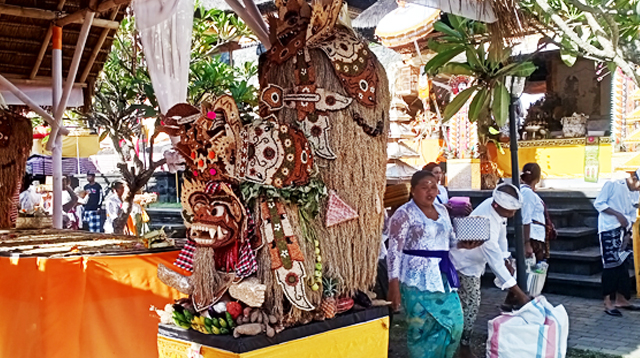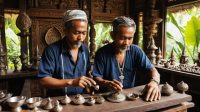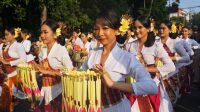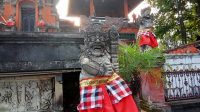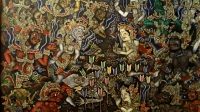THE BARONG, a mythological figure who maintains balance and protects the residents as in Bali, has always held a special place in religious and Balinese traditional ceremonies. In some regions of Bali, a unique and meaningful manifestation of the Barong has emerged: Barong assembled from various crops.
This Barong Palawija or crop barong is not simply a mask art, but rather a grand offering closely linked to major ceremonies as an expression of gratitude to Hyang Widhi, or the Creator, for the abundance of the earth’s produce.
Symbol of Fertility and Abundance
Barong made from crops—such as corn, rice, beans, string bean, tubers, banana and other agricultural products—represent the community’s collective gratitude for a bountiful harvest. Each grain and fruit that makes up the Barong symbolizes the blessings bestowed. The creation of the Barong Palawija is usually performed before or as the culmination of major traditional ceremonies.
Offerings in Grand Ceremonies
In the context of ceremonies, the Barong Palawija serves as an important offering. It is not merely a decoration, but a sacred ritual medium, representing prosperity and blessings. Its presence reaffirms the spiritual bond between humans, nature, and God (the Creator/Hyang Widhi).
It’s important to emphasize: The selection of secondary crops as the raw material for Barong affirms that everything humans enjoy comes from the land and the blessings of the Creator. By offering them back, the community demonstrates humility and acknowledgement of a greater power. This is a manifestation of Eastern philosophy, which teaches the importance of maintaining harmony with nature (such as the Balinese concept of Tri Hita Karana) as the source of life.
This unique tradition of Barong Palawija teaches a valuable lesson: that harvest celebrations should always be accompanied by a deep sense of gratitude and a desire to share. This is a rich cultural heritage, bringing together fine arts, religious rituals and local wisdom in viewing life and the universe. (*)



